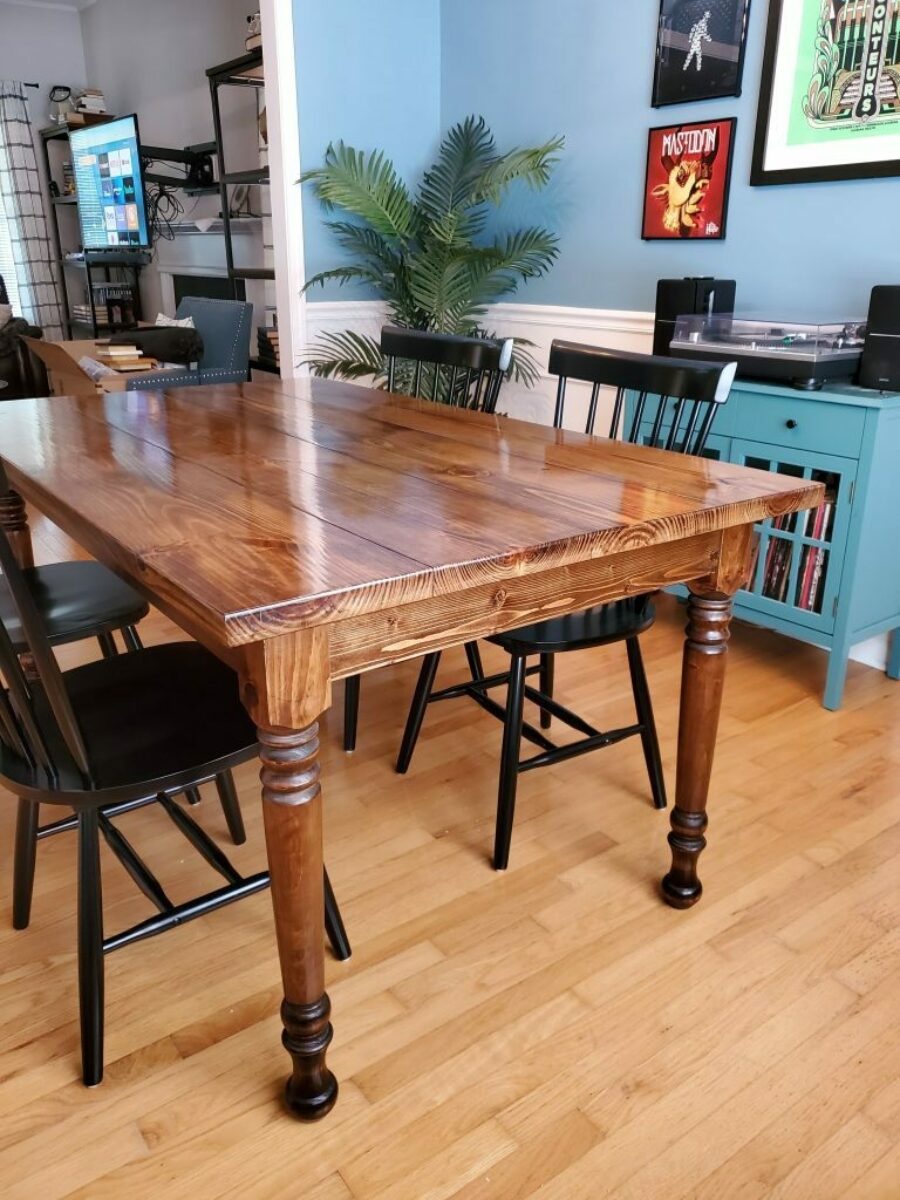Why Custom Dining Room Table Legs Are Worth the Investment
Why Custom Dining Room Table Legs Are Worth the Investment
Blog Article
From Conventional to Modern: Discover the Perfect Eating Space Table Legs for Your Style
While traditional layouts such as cabriole and transformed legs evoke a feeling of classic elegance, modern designs like barrette and geometric options provide a possibility for striking visual interest. As you think about these components, the question stays: exactly how can you flawlessly integrate these diverse leg styles to create an unified dining experience?
Comprehending Table Leg Styles
The range of eating room table leg designs can dramatically affect both the aesthetic appeals and functionality of the room. Each leg style contributes unique practical features and aesthetic components, satisfying varied layout choices and use needs. Recognizing these designs is vital for choosing the ideal table that aligns with your overall interior decoration vision.
As an example, tapered legs offer a tidy, traditional look that can enhance an area's sophistication, while pedestal bases provide security and make the most of legroom, making them perfect for smaller rooms. Hairpin legs, a hallmark of mid-century modern-day style, introduce a commercial style, permitting a ventilated, open feeling. Trestle legs evoke rustic beauty, offering durable support and a feeling of eternity.
Wood legs can bring warmth and appearance, whereas metal alternatives commonly convey a smooth, modern ambiance. Ultimately, recognizing table leg styles is necessary for creating a cohesive eating location that reflects personal design while ensuring functionality and convenience.
Traditional Table Leg Options
When choosing eating room table legs, conventional choices often symbolize classic beauty and craftsmanship. These layouts mirror a rich heritage and a commitment to quality, making them excellent for those who value classic appearances.
One of the most famous traditional leg styles is the cabriole leg, defined by its stylish curved shape. This style typically includes ornamental makings and is most generally located in Queen Anne and Chippendale furnishings. An additional preferred option is the turned leg, which flaunts a collection of smooth, rounded shapes that supply a timeless appearance while maintaining stability.
Furthermore, the straight leg, while easy, provides a durable and unadorned framework that can mix effortlessly with a range of tabletop styles. For those drawn to ornate detailing, claw-and-ball feet legs stimulate a feeling of magnificence and can function as a sensational focal point in any dining room.
Finally, pedestal bases, although not strictly legs, give an alternate conventional option that permits enough legroom and can be perfectly sculpted. Each of these conventional leg styles adds to the general ambiance of a dining-room, weding function with aesthetic allure.

Modern Table Leg Designs
Modern table leg styles use a diverse variety of designs that highlight clean lines and innovative products. These designs typically prioritize functionality while functioning as striking focal factors within a dining area. Minimalist aesthetics prevail, with legs crafted from products such as steel, glass, and engineered wood, which add to a contemporary and ventilated feel.
One prominent style is the hairpin leg, characterized by its slender, tapered framework that supplies stability without overwhelming the tabletop (dining room table legs). This style is frequently discovered in mid-century modern-day her comment is here furniture and can easily enhance various dining table forms. An additional trend is making use of geometric forms, where legs might take on unbalanced or angular kinds, adding visual rate of interest and a touch of virtuosity

Mixing Designs for Distinct Spaces
Frequently, property owners seek to create one-of-a-kind eating areas that show click here for info their personal design by mixing different design elements. This strategy enables the consolidation of diverse visual appeals, resulting in an unified yet unique environment. Pairing a rustic wood table with smooth, modern steel legs can produce an attractive comparison that raises the room's total appeal.
In addition, integrating vintage table legs with modern tabletops can stimulate a sense site web of background while preserving a modern perceptiveness. Such combinations not only display private preference however additionally motivate creative thinking, enabling homeowners to curate an area that really feels both personal and welcoming.
Color plays a crucial function in this mixing process; choosing table legs that complement or contrast with the existing color pattern can improve aesthetic interest. Whitewashed legs can soften the daring of a dark table surface area, creating a balanced visual.
Tips for Choosing the Right Legs
Choosing the right table legs is necessary for achieving both performance and visual appeal in your eating room. Begin by considering the general design of your area. Conventional setups profit from legs that include intricate carvings or transformed layouts, while modern rooms may call for smooth, minimal designs.
Following, assess the height and security of the legs. dining room table legs. Typical dining tables range between 28 to 30 inches in height, so make sure the legs enhance this dimension for convenience. In addition, durable products, such as wood or steel, can improve security and long life
Evaluate the leg shape as well-- options include directly, tapered, or stand styles. Straight legs use a timeless appearance, while conical legs can include a touch of style. Pedestal bases give ample legroom and are perfect for smaller spaces.
Conclusion
In summary, selecting the excellent eating room table legs calls for cautious consideration of both traditional and modern-day designs. By harmonizing leg design, height, and product with the general décor, a natural and inviting ambience can be accomplished.
The variety of eating room table leg designs can considerably affect both the looks and capability of the room. Eventually, understanding table leg designs is important for developing a cohesive eating location that reflects individual design while guaranteeing functionality and convenience.One of the most iconic standard leg designs is the cabriole leg, characterized by its stylish bent form. Straight legs supply a classic look, while conical legs can include a touch of elegance.In recap, choosing the optimal eating area table legs calls for cautious consideration of both conventional and modern styles.
Report this page